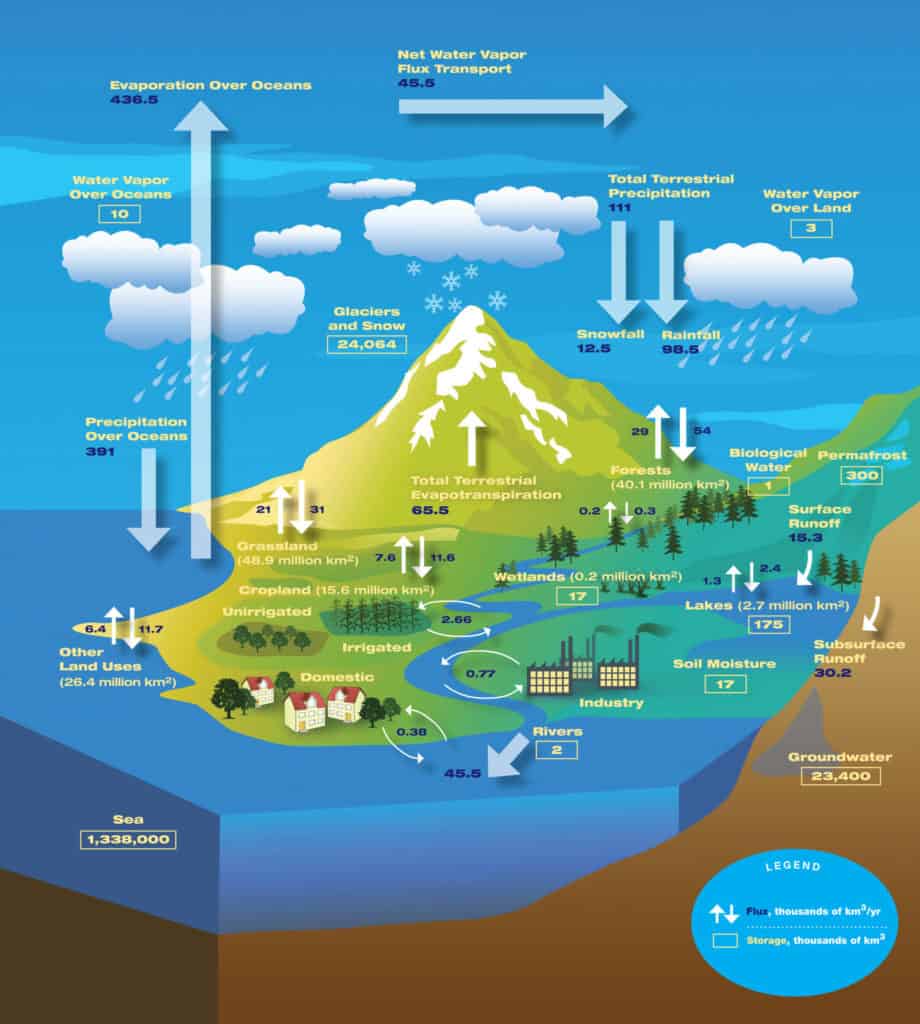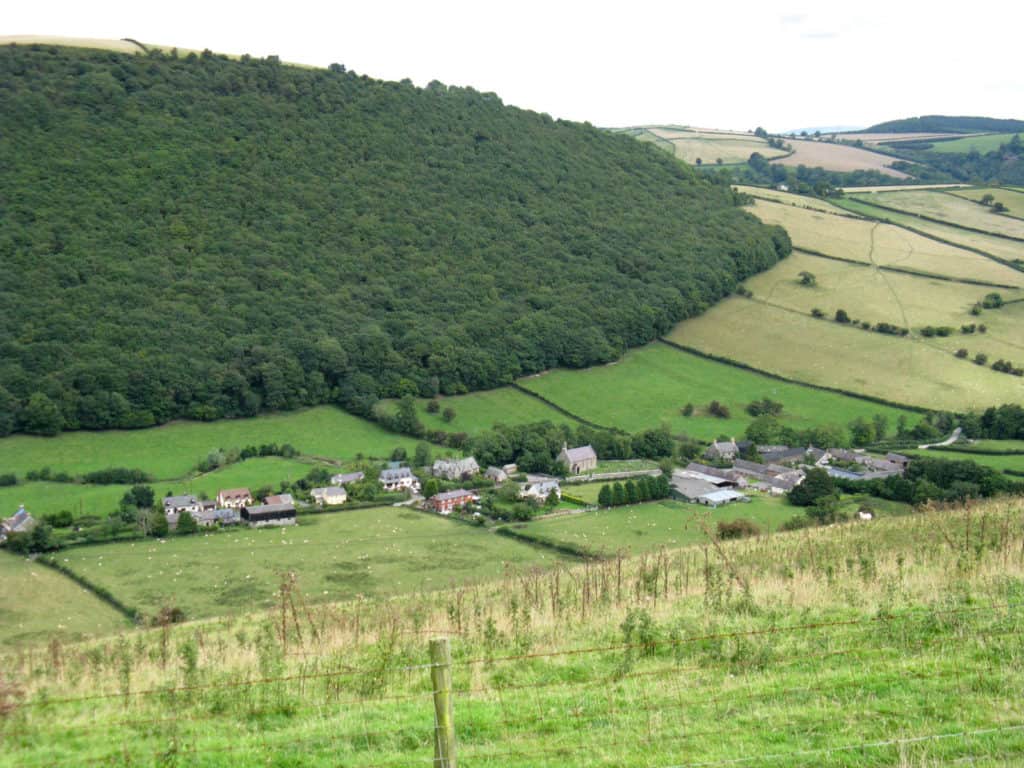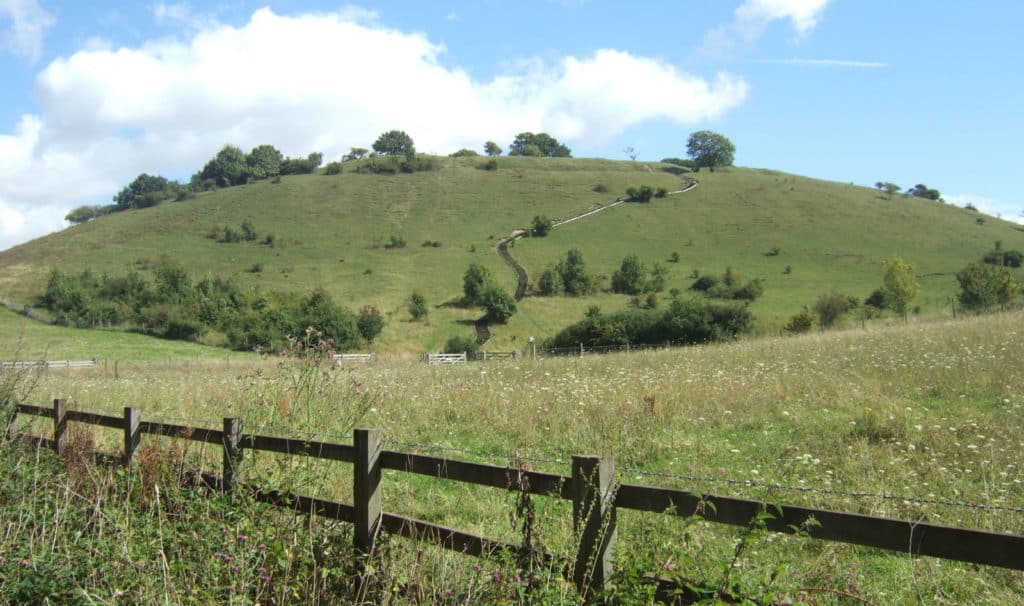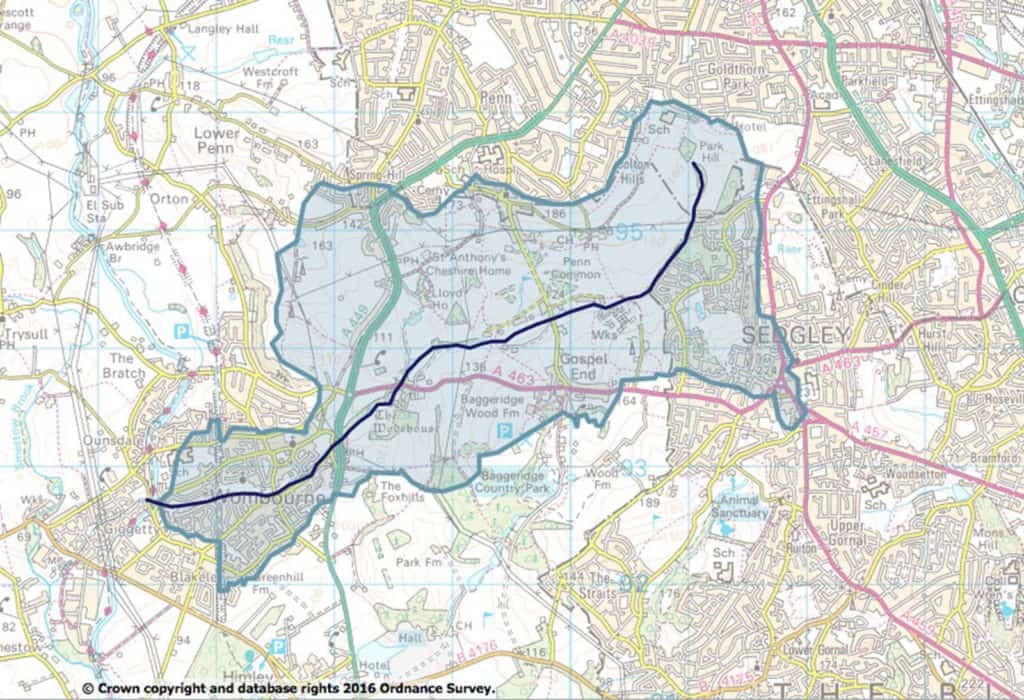Consider the water cycle at the scale of a single drainage basin

What questions do geographers ask?
You can ask geographical questions about the water cycle for any location. Photographs, map views and Google Earth views can help you. Here are some examples.

- What is the role of the trees in the water cycle at this location?
- Does the rate of infilitration change with position on slope?
- What proportion of the rainfall at this location becomes stream discharge?

- What is the role of the trees in the water cycle at this location?
- How does the rock type affect flows within the water cycle?
- What proportion of the rainfall at this location becomes stream discharge?
In urban areas, a possible topic to study is flash flooding, occurring after intense summer rainfall. Search news reports for the drainage basin that you are interested in, for example
UK weather: London and South East hit by flash flooding 23 June 2016
Flash flooding leaves roads underwater and cars submerged (Croydon) 7 June 2016
What could you investigate by fieldwork?
Here are some examples. Each research question has been split into 2 or 3 sub-questions.
| Research questions | Sub questions |
|---|---|
| How do physical factors affect the response to rainfall across catchment x? | What is the variation in physical factors across the catchment, such as rock type, soil type, drainage density, land use and slope angle How and why does river discharge vary in different tributaries? How and why does infiltration vary in different parts of the catchment? |
| Is there a relationship between stream order and discharge in catchment x? | How does river discharge vary in different tributaries of different orders? To what extent is this related to stream order or are other physical and human factors significant? |
| Why does the rate of infiltration / interception / evaporation / overland flow vary in area x? (e.g. a hillslope, an area of woodland, a transition from woodland to grassland, part of an urban area) | How does the rate vary in area x? To what extent is this related to physical and human factors? |
Specialised geographical concepts
A good way to demonstrate challenge in your choice of research question and/or sub questions is to consider one or more of the specialised geographical concepts. Here are a few suggestions:
| Specialised concept | Research question or sub question |
|---|---|
| Causality | What impact do physical factors have on infiltration rate? |
| Causality | To what extent does soil compaction determine the rate overland flow? |
| System | An investigation into the size of stores and flows of the water cycle in woodland x |
Choosing a fieldwork location
Use the Catchment Data Explorer (Environment Agency) to find a small drainage basin to investigate.

Access points available along the length of the stream and in different parts of the drainage basin. Can you compare flows (like discharge, infiltration and evapotranspiration) between the built-up areas and the open areas? What percentage of the rain falling from the sky into the drainage basin reaches the mouth of the stream? Where does the rest of the water go? Does the percentage of rain reaching the stream vary between different parts of the drainage basin?

Secondary and Further Education Courses
Set your students up for success with our secondary school trips and courses. Offering excellent first hand experiences for your students, all linked to the curriculum.
Group Leader and Teacher Training
Centre-based and digital courses for teachers
Experiences for Young People
Do you enjoy the natural world and being outdoors? Opportunities for Young People aged 16-25.
